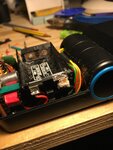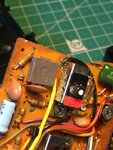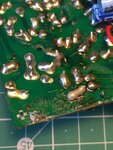wizman
Junior Member level 1

Howdy all,
I just received an old camera flash in the post and on opening the battery compartment i was met with two very corroded AA batteries. I was wondering if the corrosion will have caused damage to the flash beyond repair or if cleaning the contacts and replacing any corroded wire will do the trick. I was also wondering if there is anything to be cautious of in the circuit e.g. the capacitors.
Thanks, Wiz
I just received an old camera flash in the post and on opening the battery compartment i was met with two very corroded AA batteries. I was wondering if the corrosion will have caused damage to the flash beyond repair or if cleaning the contacts and replacing any corroded wire will do the trick. I was also wondering if there is anything to be cautious of in the circuit e.g. the capacitors.
Thanks, Wiz




